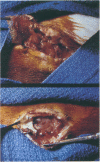Abstract
Abdominal wall defects resulting from trauma, invasive infection, or hernia present a difficult problem for the surgeon. In order to study the problems associated with the prosthetic materials used for abdominal wall reconstruction, an animal model was used to simulate abdominal wall defects in the presence of peritonitis and invasive infection. One hundred guinea pigs were repaired with either polytetrafluorethylene (PTFE) or polypropylene mesh (PPM). Our experiments included intra-operative contamination with Staphylococcus aureus. We found significantly fewer organisms (p less than 0.05) adherent to the PTFE than to the PPM when antibiotics were administered after surgery, as well as when no antibiotics were given. In the presence of peritonitis, we found no real difference in numbers of intraperitoneal bacteria present whether PTFE or PPM was used. In all instances, the PTFE patches produced fewer adhesions and were more easily removed. From these experiments, it appears that PTFE may be associated with fewer problems than PPM in the presence of contamination and infection.
Full text
PDF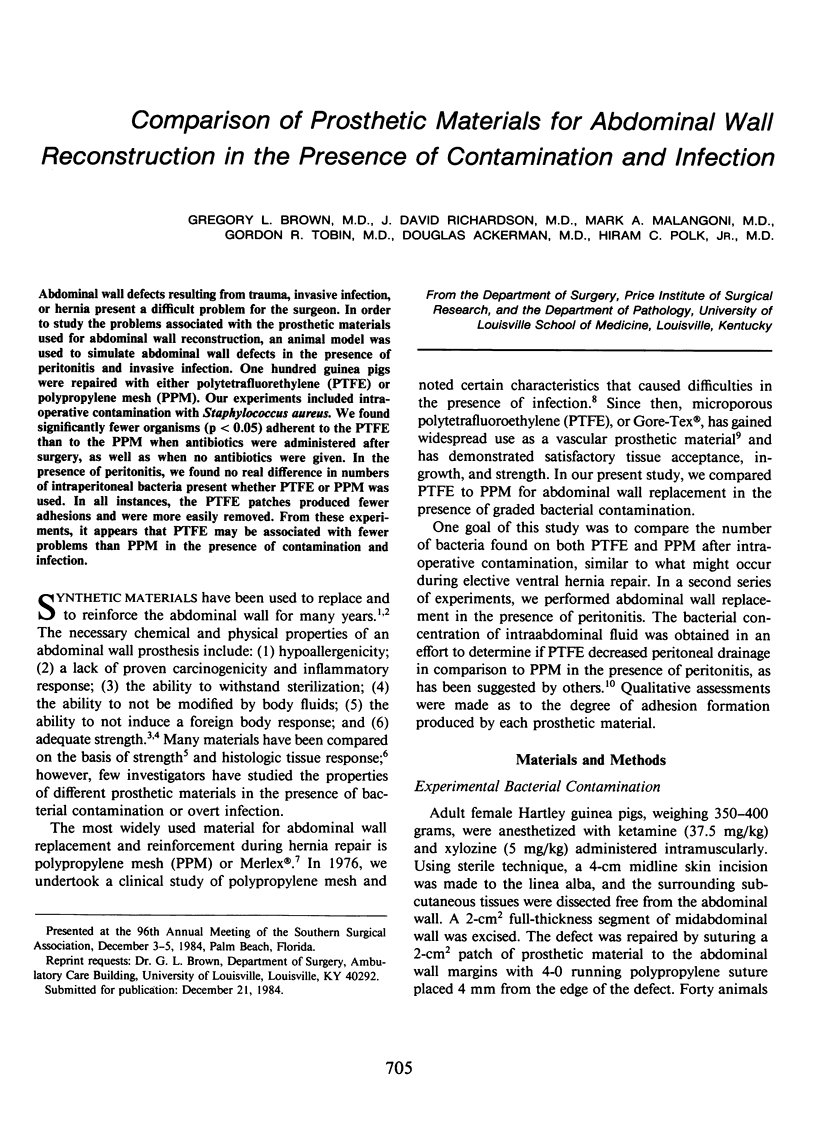

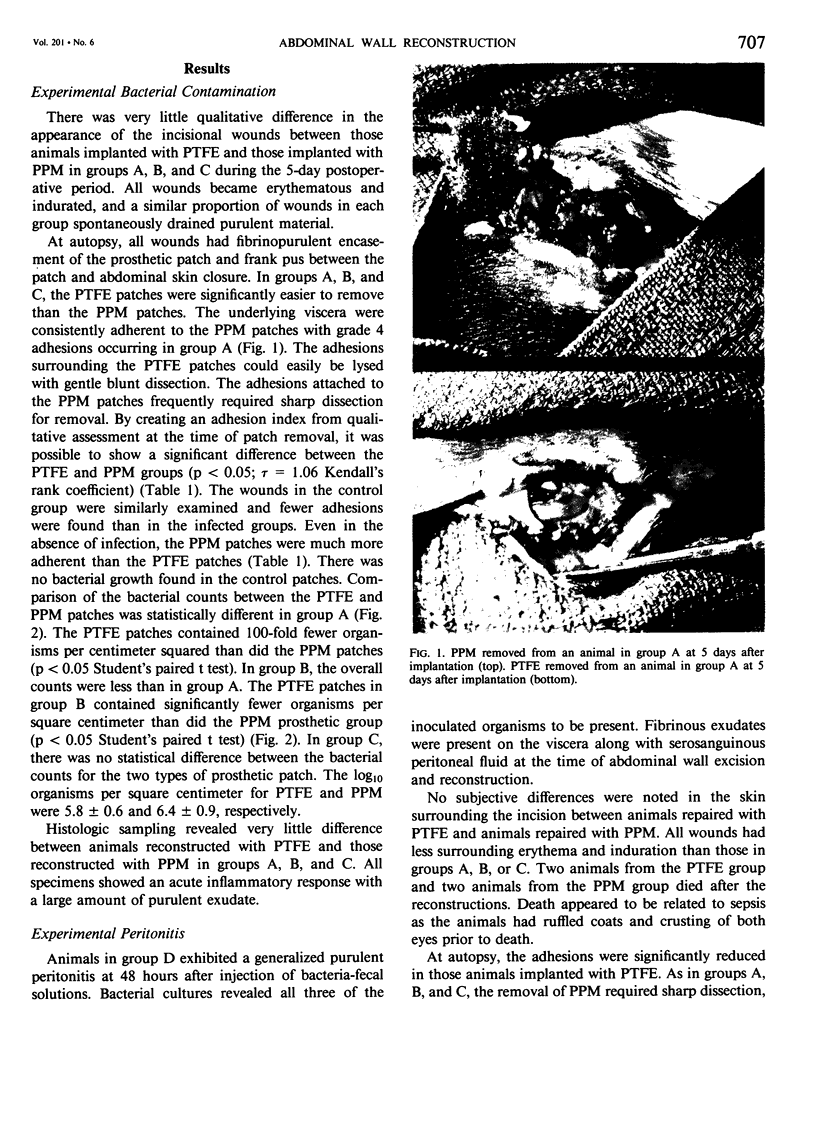
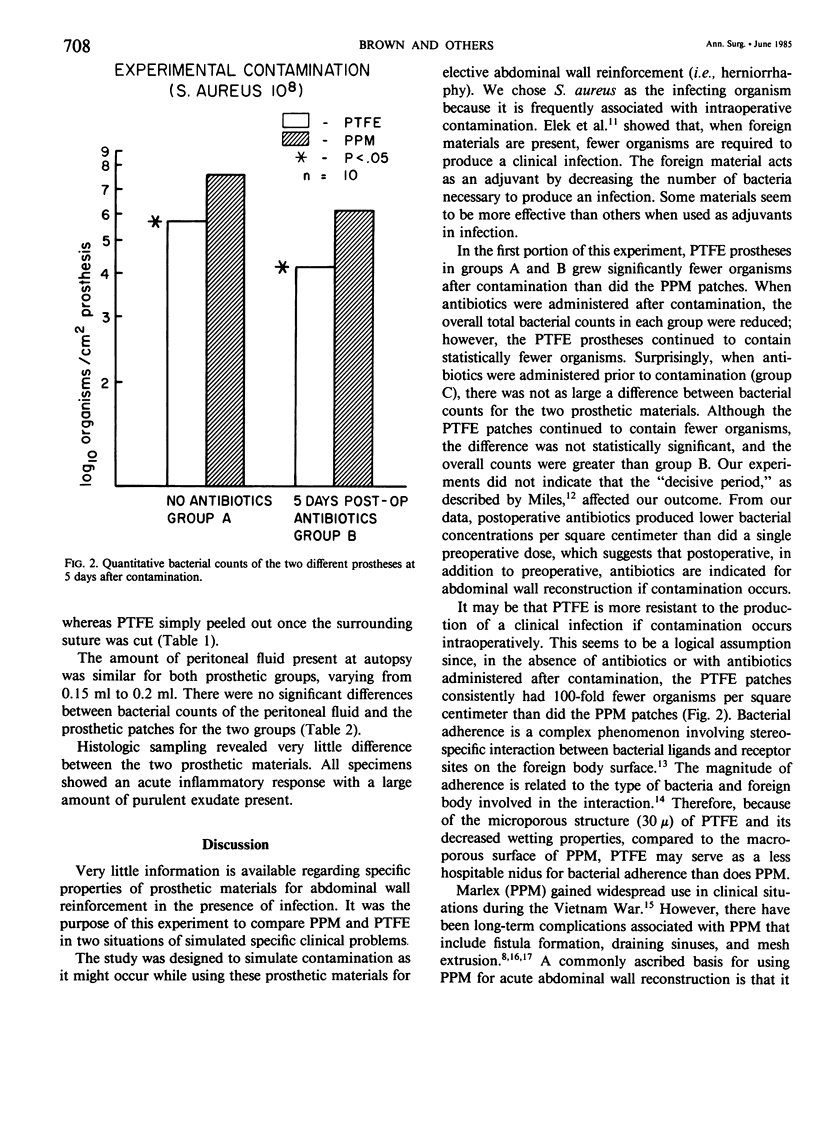
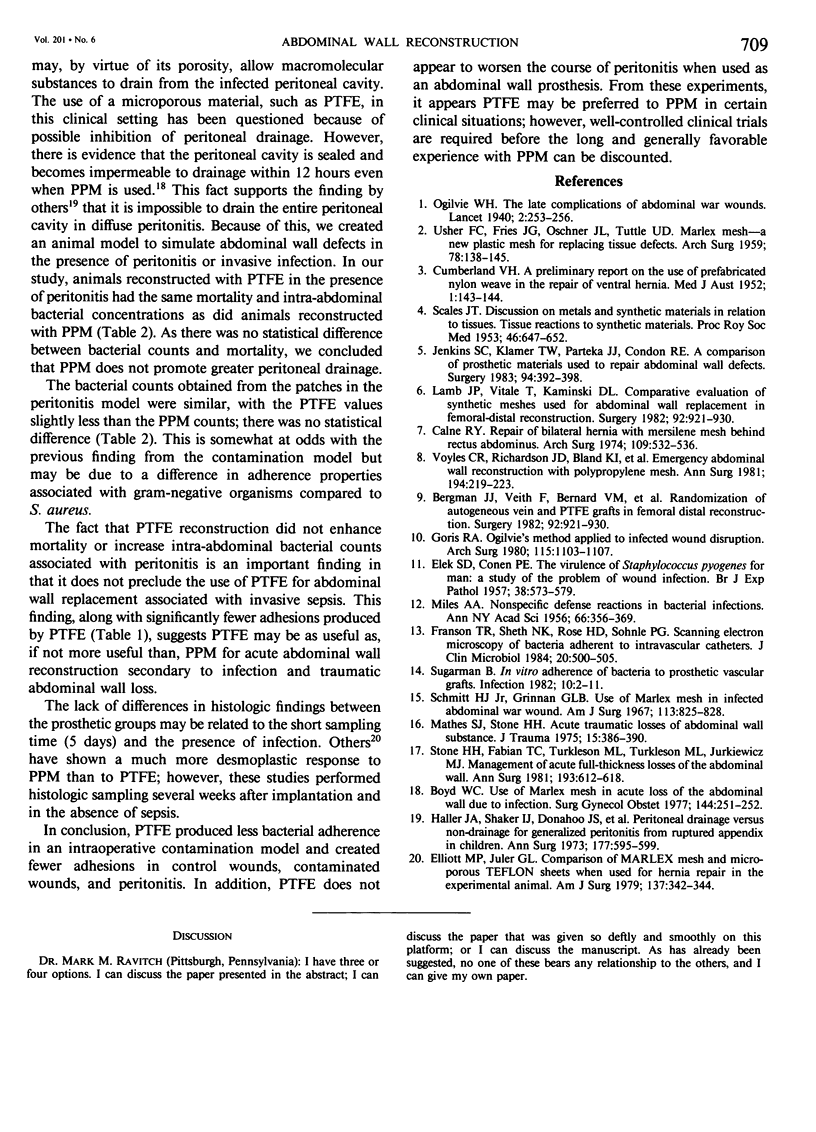
Images in this article
Selected References
These references are in PubMed. This may not be the complete list of references from this article.
- Bergan J. J., Veith F. J., Bernhard V. M., Yao J. S., Flinn W. R., Gupta S. K., Scher L. A., Samson R. H., Towne J. B. Randomization of autogenous vein and polytetrafluorethylene grafts in femoral-distal reconstruction. Surgery. 1982 Dec;92(6):921–930. [PubMed] [Google Scholar]
- Bergan J. J., Veith F. J., Bernhard V. M., Yao J. S., Flinn W. R., Gupta S. K., Scher L. A., Samson R. H., Towne J. B. Randomization of autogenous vein and polytetrafluorethylene grafts in femoral-distal reconstruction. Surgery. 1982 Dec;92(6):921–930. [PubMed] [Google Scholar]
- Boyd W. C. Use of Marlex mesh in acute loss of the abdominal wall due to infection. Surg Gynecol Obstet. 1977 Feb;144(2):251–252. [PubMed] [Google Scholar]
- CUMBERLAND V. H. A preliminary report on the use of prefabricated nylon weave in the repair of ventral hernia. Med J Aust. 1952 Feb 2;1(5):143–144. doi: 10.5694/j.1326-5377.1952.tb75023.x. [DOI] [PubMed] [Google Scholar]
- Calne R. Y. Repair of bilateral hernia with Mersilene mesh behind rectus abdominus. Arch Surg. 1974 Oct;109(4):532–536. doi: 10.1001/archsurg.1974.01360040050013. [DOI] [PubMed] [Google Scholar]
- ELEK S. D., CONEN P. E. The virulence of Staphylococcus pyogenes for man; a study of the problems of wound infection. Br J Exp Pathol. 1957 Dec;38(6):573–586. [PMC free article] [PubMed] [Google Scholar]
- Elliott M. P., Juler G. L. Comparison of Marlex mesh and microporous teflon sheets when used for hernia repair in the experimental animal. Am J Surg. 1979 Mar;137(3):342–344. doi: 10.1016/0002-9610(79)90063-1. [DOI] [PubMed] [Google Scholar]
- Franson T. R., Sheth N. K., Rose H. D., Sohnle P. G. Scanning electron microscopy of bacteria adherent to intravascular catheters. J Clin Microbiol. 1984 Sep;20(3):500–505. doi: 10.1128/jcm.20.3.500-505.1984. [DOI] [PMC free article] [PubMed] [Google Scholar]
- Goris J. A. Ogilvie's method applied to infected wound disruption. Arch Surg. 1980 Sep;115(9):1103–1107. doi: 10.1001/archsurg.1980.01380090071017. [DOI] [PubMed] [Google Scholar]
- Haller J. A., Jr, Shaker I. J., Donahoo J. S., Schnaufer L., White J. J. Peritoneal drainage versus non-drainage for generalized peritonitis from ruptured appendicitis in children: a prospective study. Ann Surg. 1973 May;177(5):595–600. [PMC free article] [PubMed] [Google Scholar]
- Jenkins S. D., Klamer T. W., Parteka J. J., Condon R. E. A comparison of prosthetic materials used to repair abdominal wall defects. Surgery. 1983 Aug;94(2):392–398. [PubMed] [Google Scholar]
- Mathes S. J., Stone H. H. Acute traumatic losses of abdominal wall substance. J Trauma. 1975 May;15(5):386–391. doi: 10.1097/00005373-197505000-00003. [DOI] [PubMed] [Google Scholar]
- SCALES J. T. Tissue reactions to synthetic materials. Proc R Soc Med. 1953 Aug;46(8):647–652. [PubMed] [Google Scholar]
- Schmitt H. J., Jr, Grinnan G. L. Use of Marlex mesh in infected abdominal war wound. Am J Surg. 1967 Jun;113(6):825–828. doi: 10.1016/0002-9610(67)90355-8. [DOI] [PubMed] [Google Scholar]
- Stone H. H., Fabian T. C., Turkleson M. L., Jurkiewicz M. J. Management of acute full-thickness losses of the abdominal wall. Ann Surg. 1981 May;193(5):612–618. doi: 10.1097/00000658-198105000-00011. [DOI] [PMC free article] [PubMed] [Google Scholar]
- USHER F. C., FRIES J. G., OCHSNER J. L., TUTTLE L. L., Jr Marlex mesh, a new plastic mesh for replacing tissue defects. II. Clinical studies. AMA Arch Surg. 1959 Jan;78(1):138–145. doi: 10.1001/archsurg.1959.04320010140023. [DOI] [PubMed] [Google Scholar]
- Voyles C. R., Richardson J. D., Bland K. I., Tobin G. R., Flint L. M., Polk H. C., Jr Emergency abdominal wall reconstruction with polypropylene mesh: short-term benefits versus long-term complications. Ann Surg. 1981 Aug;194(2):219–223. doi: 10.1097/00000658-198108000-00017. [DOI] [PMC free article] [PubMed] [Google Scholar]



